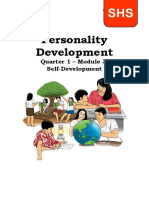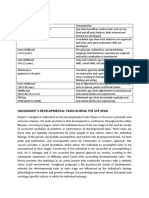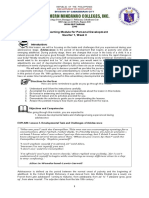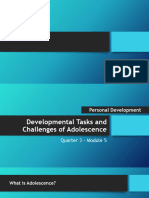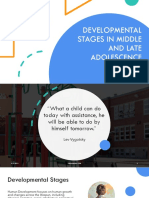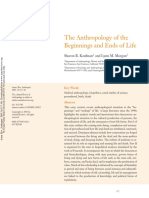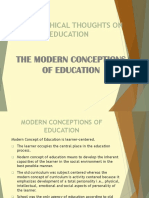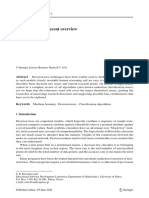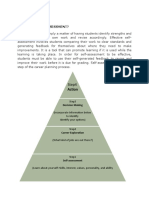0% found this document useful (0 votes)
114 views26 pagesPerdev Week 3
Adolescence is a period of rapid growth and development between childhood and adulthood. During this stage, adolescents experience physical changes through puberty and take on new social roles. They start to develop their identity and learn to interact with both sexes. Adolescence can be divided into three stages: early adolescence (ages 10-13), middle adolescence (ages 14-16), and late adolescence (ages 17-19). Each stage presents its own challenges and developmental tasks as adolescents transition to adulthood.
Uploaded by
GERALDINE CLAUDIOCopyright
© © All Rights Reserved
We take content rights seriously. If you suspect this is your content, claim it here.
Available Formats
Download as PPTX, PDF, TXT or read online on Scribd
0% found this document useful (0 votes)
114 views26 pagesPerdev Week 3
Adolescence is a period of rapid growth and development between childhood and adulthood. During this stage, adolescents experience physical changes through puberty and take on new social roles. They start to develop their identity and learn to interact with both sexes. Adolescence can be divided into three stages: early adolescence (ages 10-13), middle adolescence (ages 14-16), and late adolescence (ages 17-19). Each stage presents its own challenges and developmental tasks as adolescents transition to adulthood.
Uploaded by
GERALDINE CLAUDIOCopyright
© © All Rights Reserved
We take content rights seriously. If you suspect this is your content, claim it here.
Available Formats
Download as PPTX, PDF, TXT or read online on Scribd
/ 26




